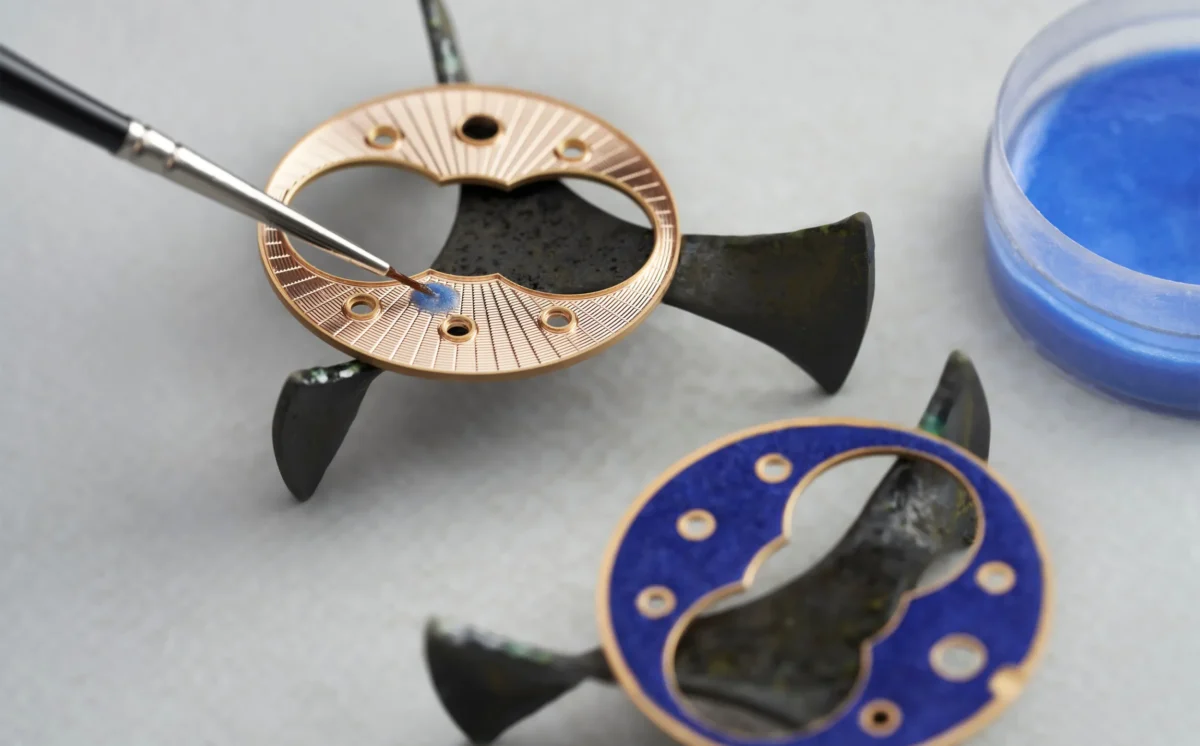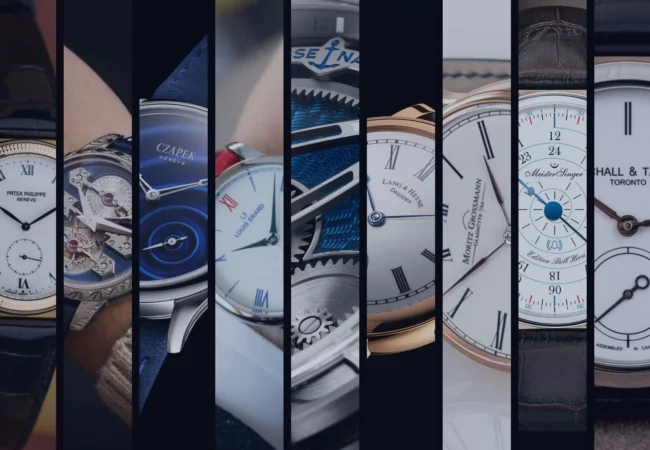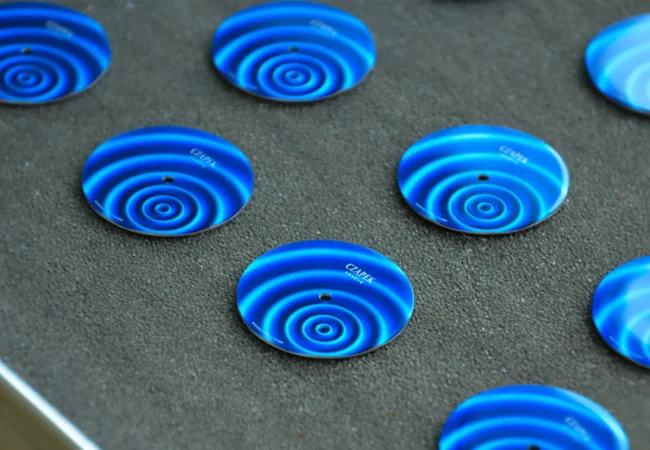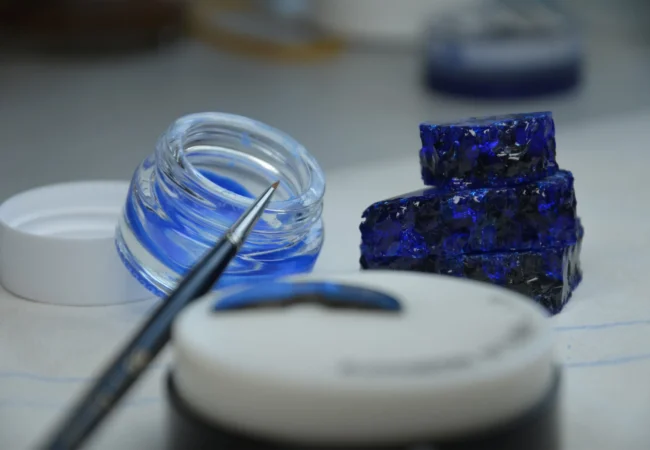Enamel is a mixture of silica, minium, potash, soda etc. With a high temperature fusion of these different components and the addition of metal oxides, different colors are obtained :
- Selenium for yellow
- Uranium for bright orange (not frequently used anymore)
- Iron for black, blue and brown
- Chrome for pink and green
- Copper for blue, green and red
- Cobalt for deep blue and green
- Manganese for mauve
- Metallic gold for sustained red
One of the important components of white enamel is arsenic, in fact the whiteness of the enamel is obtained through this component.
In addition, to obtain better ductility and lower the melting point, the enamel contains 20 to 40% lead.
Alternatives are actively researched to continue producing enamelled objects that correspond to the REACH standards the best they can.





